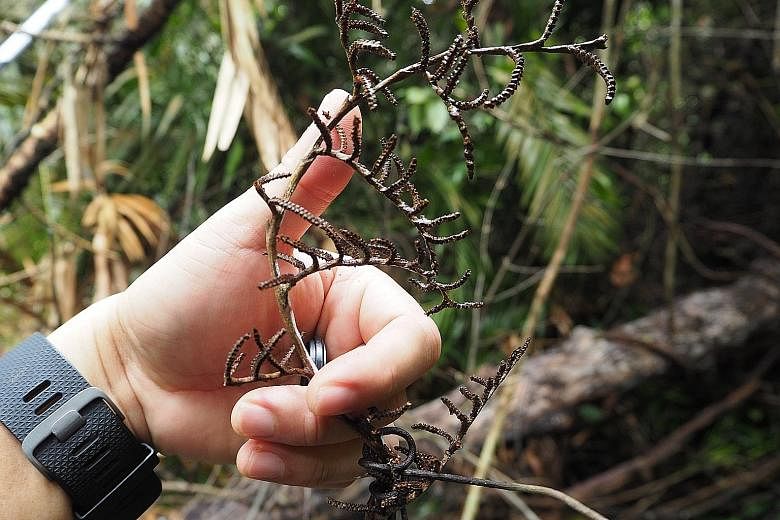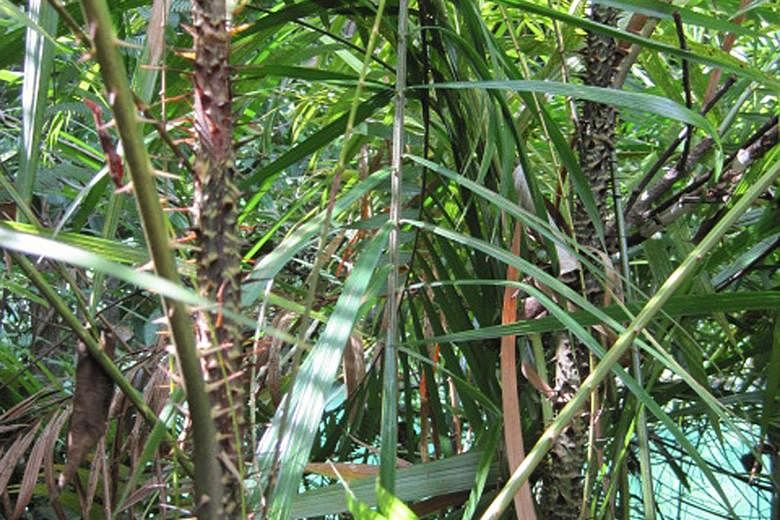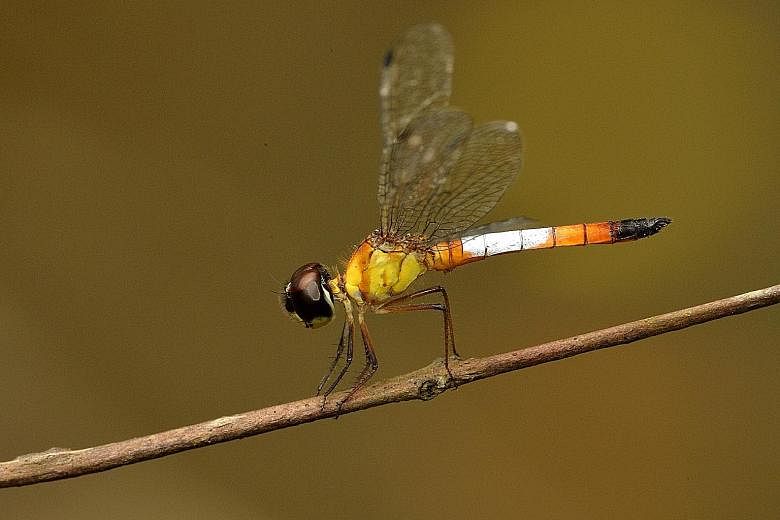Singapore's urban cityscape has become the unlikely home for otters - and these furry mammals could soon have more neighbours.
The National Parks Board (NParks) yesterday announced plans to help 46 species of native plants and animals claw their way back from the brink of extinction.
They include a rare plant known in Malay as the rotan kerai, the Sunda pangolin, and the Neptune's cup sponge - a marine organism once thought to be globally extinct.
In all, 31 plant species, seven land animal species and eight marine species will benefit from NParks' species recovery efforts to ensure that threatened wildlife here can survive and even thrive.
These targets were announced yesterday by Senior Minister of State for National Development Desmond Lee during the annual Festival of Biodiversity educational fair.
Held at the Singapore Botanic Gardens, it was also attended by Deputy Prime Minister and Coordinating Minister for Economic and Social Policies Tharman Shanmugaratnam.
NParks said yesterday that the 46 species in question are found in isolated habitats, where they are vulnerable to external threats. This means that they could easily go extinct if their habitats are damaged, or altered by factors such as climate change, said Dr Adrian Loo, director of the terrestrial division at NParks' National Biodiversity Centre.
The recovery efforts, which will span two to 10 years, will include scientific research and field studies into each species.
Information gleaned from such studies will help scientists learn more about how species interact with their environment, and the role they play in the ecosystem. This will inform decisions on how best an animal or plant can be released or replanted in the wild without affecting other flora and fauna.
One of the species which has been singled out is the pixie dragonfly. This dragonfly is classified as endangered in Singapore as there are fewer than 250 mature individuals here. In fact, according to NParks manager for conservation Robin Ngiam, who studies dragonflies, they can be found only in one pond in western Singapore.
But they play an important role in the ecosystem. Their presence in a pond indicates good water quality, and these dragonflies are also natural pest busters - dragonfly nymphs feed on mosquito larvae, and adult dragonflies feed on adult mosquitoes.
As part of efforts to increase their numbers and safeguard their existence, scientists have released the dragonfly nymphs, as well as adult dragonflies, into a test site in central Singapore, which they are monitoring, Mr Ngiam revealed.
During yesterday's event, NParks also revealed preliminary findings of an ongoing biodiversity surveyat the 163ha Bukit Timah Nature Reserve. The two-year survey which started in March last year will end next year.
Researchers have found five possibly new species of spiders, as well as other rare plants and animals.
For instance, the last time the yellow-striped caecilian was seen prior to the survey was in 1989. NParks manager for conservation Noel Thomas, also one of the co-founders of the Herpetological Society of Singapore, said this amphibian is rarely encountered due to its highly fossorial lifestyle.
Said Mr Lee: "Singapore is... packed with biodiversity that we can celebrate and protect."




